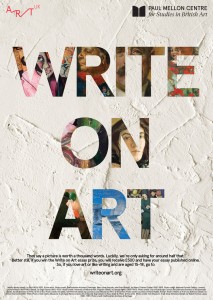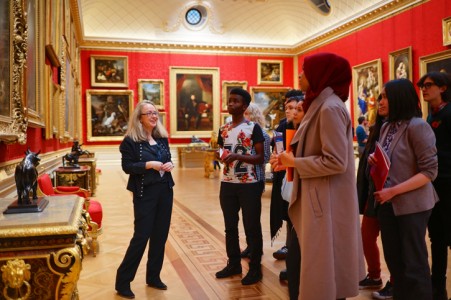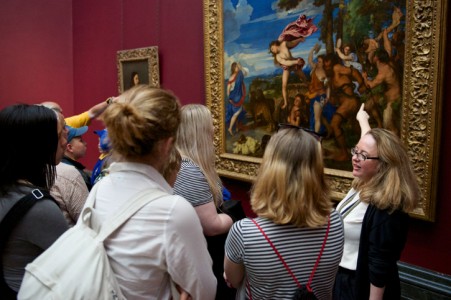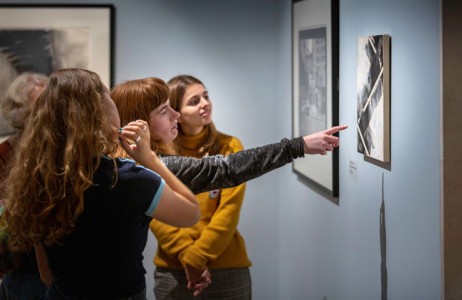Six ways to get started
- Begin by browsing artworks on Art UK – you'll find paintings, sculpture, prints and more. From the artworks page, you can use the filter on the search bar to look at artworks in museums and galleries near where you live
- You can also filter Art UK artworks by topic or keyword. Pick a topic that is of interest to you or search by keywords – try something like 'queen', 'sport', 'moustache', 'aeroplane' or 'ghost'. See what catches your eye – the site is full of surprises
- Pick a style of art! Try searching for Abstract art, or Impressionism or Pop Art using the Style filter
- Visit a local gallery and find inspiration
- Check out the Stories section on Art UK, where different artists, artworks and themes are explored. Your essay might be here too, one day!
- Still not sure? Try the artwork shuffle on the Art UK website and see six works selected at random
You can find further inspiration in our Write on Art learning resource.
What are the judges looking for?
If you are in England and Wales Year 10 or 11, Scotland S3 and S4, or Northern Ireland Years 11 (4th) and 12 (5th):
- Your essay should be 400 words maximum
- We'd like you to focus on describing what you see in your chosen artwork
If you are in England and Wales Year 12 or 13, Scotland S5 and S6, or Northern Ireland Years 13 (L6th) and 14 (L6th):
- Your essay should be 600 words maximum (excluding footnotes)
- We'd like you to include citations to your references, either as footnotes at the end of the essay or as hyperlinked words and phrases in the text of your essay
- Demonstrate to the judges that you've done some research about the work you have chosen
Write on Art 2019 winners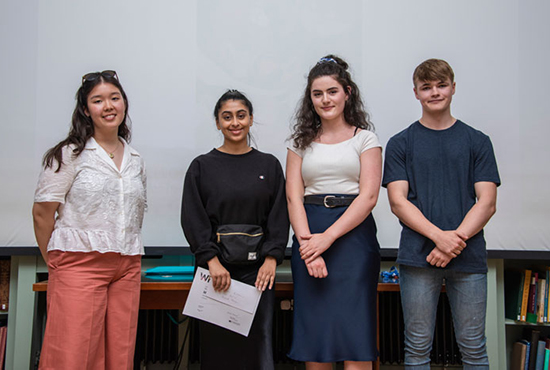
Top tips for writing about art
Start by describing what you see. Use a range of vocabulary to describe the work you have chosen. Think about how to describe the style, subject matter and atmosphere of the work you have chosen. Izzy Ajani reflects on the sitter's 'wise and knowing aura in her eyes' in Standing Figure with African Masks by Claudette Johnson, in her second place winning essay in the Year 10 & 11 category for 2020.
Is there a person in the painting? Are they sitting or standing? What are they wearing? What are they doing? What's the main colour in the painting? Is the painting dark or light? Take a look at Aoife Hogan's winning 2021 essay for Year 12 & 13, written from the perspective of the subjects in Joan Eardley's Children and Chalk Wall 3.
You don't have to write about everything represented in the picture. It's fine to focus on a particular aspect or detail. Our Superpower of Looking Kit contained examples of the questions you might want to ask about particular aspects of a picture.
Read this story on how to write about art, and how to enter the Write on Art competition.
Vocabulary
Not sure about what vocabulary to use? Check out the Art History Lexicon on the Art History Archive website. Our Superpower of Looking Kit is also a great way to learn vocabulary related to different aspects of art.
Make connections
Analyse what you see and try to make connections. Why do you think the person in the painting is doing that action? Does it mean anything to the artist? Does it mean anything to the time period the artwork was painted in?
Imogen Hodgkins – second-place winner of Write on Art 2020, Year 12 & 13 – describes how Jack Simcock's gloomy style in Cottage and Figure I is a gritty representation of reality in the Midlands and northern England in the 1960s.
You might want to tell your reader something about the life and society of the artist in order to contextualise the painting. Or you might tell your reader something about the history of the work after it was made.
Do your research
If you're not sure about how to research an artwork, artist or time period, there are plenty of places online you could start with – including Wikipedia, the Khan Academy, BBC Bitesize or Heni Talks. You could also visit a library and ask a librarian to help, or even go directly to the source by contacting the artwork's gallery or museum. For her winning 2021 essay on Joan Eardley, Aoife Hogan used a mixture of online and print resources to inform her piece which are referenced below the text.
Make it personal
You might want to tell your reader something about your particular connection to this work, such as why it appeals to you or what you find particularly interesting about it.
What was it about this work that made you choose it? Did you find out something about the artwork or the artist that related or appealed to you specifically? Remember, your passion and enthusiasm will encourage your audience to look closer and share your interest.
A great example of this is Hanifah Smith's reflections on how she views Chris Wilson's All Will Be Forgotten in light of the Coronavirus pandemic in her second place winning essay in the Year 12 & 13 category for 2021.
Write on the things you care about
Does the artwork connect to any current issues that matter to you? Does it inspire you to write about any emotionally charged topics that you care about?
For example, Jack Harrison's winning 2019 essay for Year 10 & 11 connects C. R. W. Nevinson to Banksy, through the violent depiction of 'the emotional horrors of war' in La Mitrailleuse.
